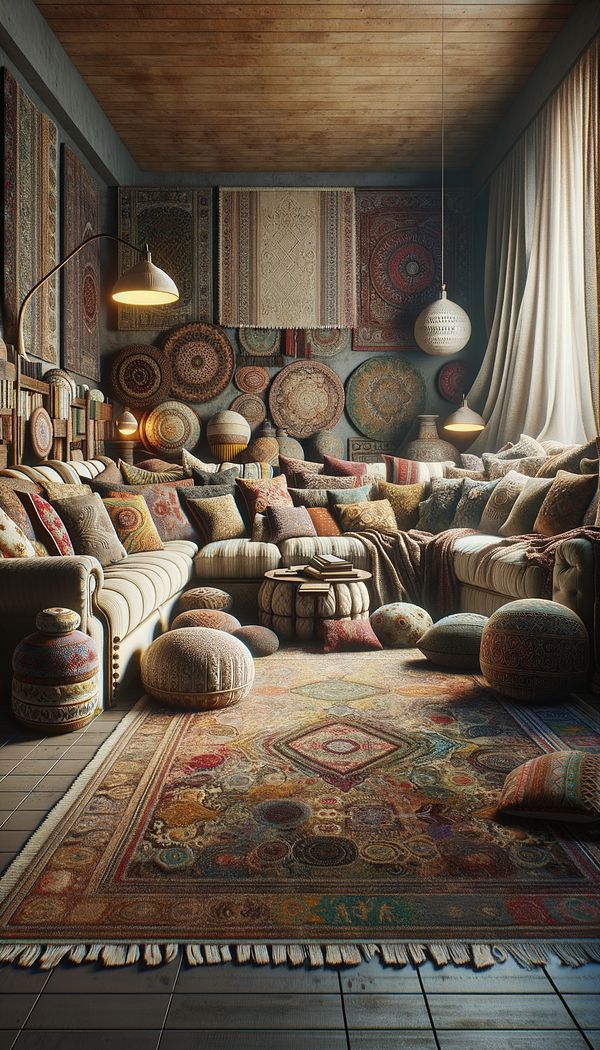What is Layering?
Layering in interior design is the process of adding multiple elements together to create depth, interest, and balance within a space.
Description
Layering is a fundamental concept in interior design that involves deliberate stacking or arranging of different elements to create a cohesive and dynamic space. This process helps in building up the visual and tactile complexity, allowing each layer to play a crucial role in the overall aesthetic and functional outcome of the design. It involves combining various materials and textiles, colors and patterns, lighting, furniture types, and decorative objects in such a way that they complement and contrast with each other to achieve a desirable effect.
By meticulously selecting and layering these elements, designers can introduce a sense of depth and richness that cannot be achieved with a single layer. It's about harmonizing the old with the new, the bold with the subtle, and the textures with the surfaces to create an intricate and well-thought-out space. Furthermore, layering is not just limited to visual aspects; it also includes how textures, lighting, and spatial arrangements influence the feel and functionality of a room.
Layering isn’t a one-size-fits-all approach. Each design project requires a unique combination of layers, tailored to the specifics of the space, the vision of the designer, and the preferences of the occupants. It’s an evolutionary process that often involves trial and error, as well as a deep understanding of design principles and elements.
Usage
A designer may apply layering in a living room by starting with a base of neutral-toned walls and hardwood floors, adding area rugs for warmth, selecting furniture with varied textures and shapes, incorporating throw pillows and blankets in diverse patterns and colors, and finishing with layered lighting that includes ambient, task, and accent lights. Artwork and personal items can add a final layer of personality and uniqueness to the space.
FAQs
-
Why is layering important in interior design?
Layering adds depth, texture, and personality to a space, creating a more visually appealing and functional environment. It helps in balancing out elements, making a room feel complete and lived-in.
-
Can layering be applied to all types of interior design styles?
Yes, layering can be applied to any interior design style. The key is to understand the unique characteristics of the style and layer elements in a way that enhances its distinct features and mood.
-
How can one start with layering in a room?
Begin by identifying the base layers, such as flooring and wall color, then progressively add furniture, textiles like rugs and curtains, and finally, decorative objects and artwork. Consider colors, textures, and the spatial relationship between items.
-
Are there any mistakes to avoid when layering?
Avoid over-layering, which can lead to a cluttered and overwhelming space. Ensure there is a balance and harmony among elements, keeping in mind the scale, proportion, and color scheme of the room.
Practical Application
Start with a plan and a clear understanding of the space's existing elements and intended function. Gradually build up layers, from base elements like wall and floor treatments to more detailed elements such as textiles and decorative objects. Pay attention to balance, contrast, and harmony among these elements. Experiment with different combinations and be prepared to adjust as needed to achieve your desired look.
-
Materials & Textiles360 articles
-
Lighting111 articles
-
Color & Patterns154 articles
-
Decorative Objects240 articles
-
Decorating Principles & Elements330 articles
-
AsymmetricalAsymmetrical refers to a design that is not symmetrical, exhibiting balance through differing elements.
-
EclecticEclectic refers to a design style that combines elements from various time periods, cultures, or design philosophies.
-
LayeredLayered refers to the technique of adding multiple elements to create depth and interest in an interior design.
-
Gender NeutralGender neutral in interior design refers to spaces or designs that do not conform to traditional gender norms and stereotypes.
-
BauhausBauhaus is a design movement that originated in Germany, emphasizing functionality, simplicity, and the use of modern materials.
